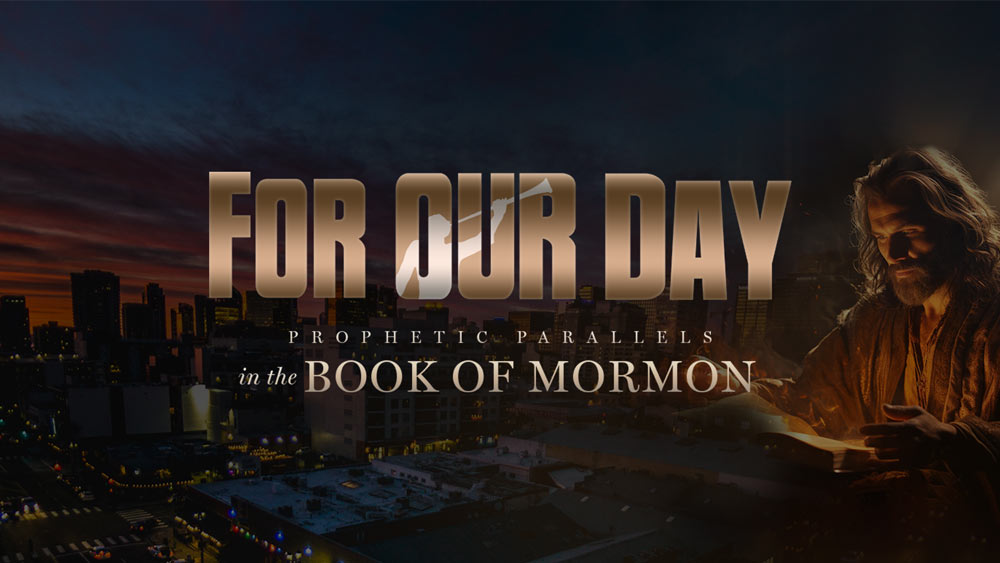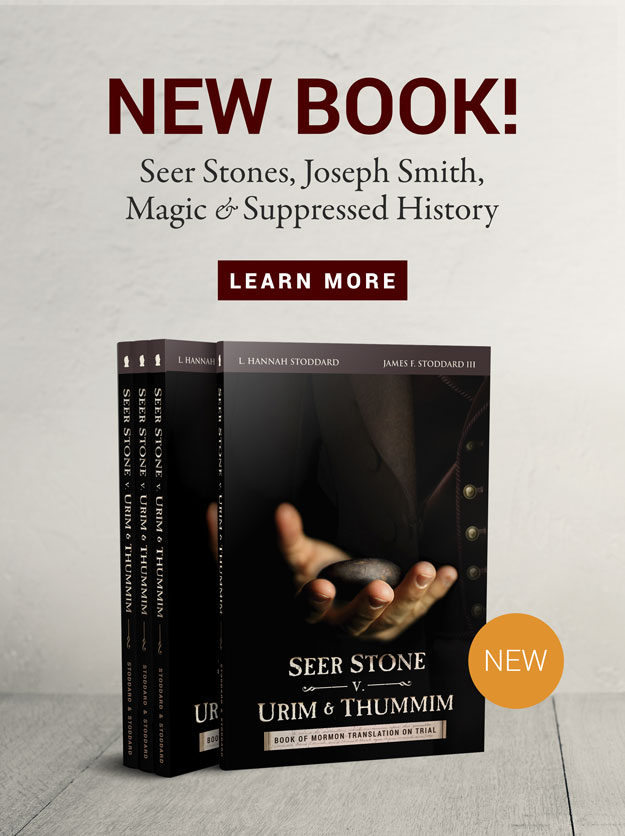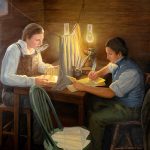Administration of President Smith — 1901-1918
The Presidency Re-organized

At the regular weekly meeting of the apostles, held in the Salt Lake Temple, October 17, 1901, the First Presidency was re-organized. Joseph F. Smith, the senior apostle, was sustained as President of the Church, and he selected John R. Winder and Anthon H. Lund as his counselors. Brigham Young Jr., was chosen president of the council of the twelve apostles. John R. Winder the first counselor in the First Presidency, was at the time of his appointment second counselor to Presiding Bishop William B. Preston. Anthon H. Lund was a member of the council of apostles. Both counselors were men of wide experience, careful and conservative, and well fitted for this new calling. One week later (Oct. 24) Hyrum Mack Smith, eldest son of President Joseph F. Smith, was called to fiill the vacancy in the council of the apostles.1
A Special Conference
A special conference of the Church was held in the tabernacle, November 10, 1901, and the general authorities of the Church were sustained by the vote of the people. Each quorum of the Priesthood voted separately, and then the entire body of the Saints, according to the regular custom when a new First Presidency is sustained.2
President Joseph F. Smith
November 13, 1838, Joseph F. Smith was born at Far West, Missouri. A few days before his birth his father Hyrum Smith and his uncle, Joseph Smith the Prophet, and others, had been taken prisoners by the mob-militia of Missouri on the false charge of treason, and were under sentence to be shot. As a child Joseph F. Smith passed through the trying scenes of Missouri and Illinois, and in 1848 (Sept. 23) he entered the Salt Lake Valley with his mother. Although but a boy nine years of age, he drove an ox team across the plains from the Missouri River. In 1852 his mother, Mary Fielding Smith, died, and two years later, May 27, 1854, he left for a mission to the Hawaiian Islands, when but fifteen years of age. He performed active and faithful msssionary service in that land and later in Great Britain and was ordained an apostle by President Brigham Young, July 1, 1866. October 8, 1867, he was chosen as one of the council of the twelve, suc ceeding Amasa M. Lyman. With the exception of the interim between the administration of President Taylor and that of President Woodruff, he served as a member of the First Presidency from October, 1880, until the death of President Snow.3

The Bureau of Information
An important step in the missionary work of the Church was the opening of the “Bureau of Information and Church Literature,” August 4, 1902, on the temple block. A small building for the entertainment of strangers and as a storehouse for literature was erected in 1902, and the work was placed under the direction of Benjamin Goddard, Thomas Hull, Arnold H. Schulthess and Josiah Burrows. About seventy-five members of the Church were called to act as guides and entertain visitors. Literature was freely distributed and much prejudice was removed. The first year more than one hundred and fifty thousand persons visited the block, and eighteen or twenty years later over four hundred thousand people, on the average, passed through the grounds annually. In 1904 a more commodious building was erected which has been added to from time to time until now an excellent building stands upon the ground for the benefit and comfort of strangers.4
The Reed Smoot Case
January 20, 1903, the legislature of Utah elected Reed Smoot United States senator. He had been a candidate before, but stepped aside in favor of another. April 8, 1900, he was called to the apostleship, and the anti-“Mormon” element in Utah made this a pretext for entering a protest against his being seated. As early as November 24, 1903, when it became known that he would be a candidate, the Ministerial Alliance, an organization of Protestant ministers of Salt Lake City, adopted resolutions in protest of his candidacy. Their grounds were that he was an apostle of the “Mormon” Church, and believed in polygamy. They had been successful in eliminating B. H. Roberts from political office in 1900, and this gave them encouragement to press the matter further in their campaign to disfranchise all the elders of the Church, and if successful, eventually all members of the Church. B. H. Roberts was denied his seat on the grounds that he was a polygamist; Reed Smoot was to be eliminated because he “believed in polygamy” and was an apostle of the Church. It was commonly reported that if Reed Smoot could be denied a seat in the senate, then any member of the Church who had been through the temple could also be deprived of his franchise and this was the aim of these reverend gentlemen and their associates.5
Protest of Citizens
January 25, 1903, nineteen citizens of Salt Lake City signed and forwarded to the senate of the United States a formal protest asking for the expulsion of Reed Smoot from the senate.
In substantiation of these charges the protestants quoted from various sources, including many newspaper reports utterly unreliable and false upon their very face. The Rev. John L. Leilich also made separate affidavit stating among other falsehoods that Reed Smoot was a polygamist. As this charge was untrue the reverend gentleman was unable to prove his statements.6

Senator Smoot Makes Reply
To all these charges Senator Smoot made full and complete denial in an answer in the District of Columbia, January 4, 1904. March 5, 1903, he had been sworn in as a senator and his case was referred to the committee on privileges and elections of which Julius C. Burrows of Michigan was chairman. Mr. Robert W. Tayler, of Ohio, who gained some prominence and notoriety in the case of B. H. Roberts, was the attorney for the protestants. Senator Smoot was represented by A. S. Worthington, of Washington, and Waldemar Van Cott, of Salt Lake City.7
The Case Before the Senate
The case was first considered by the committee on privileges and elections, January 16, 1904, and continued before that committee until June, 1906. The chairman, Julius C. Burrows, and other members of the committee manifested a spirit of extreme hatred in the case. It was apparent from the beginning that it was The Church of Jesus Christ of Latter-day Saints that was on trial before the nation, not Senator Reed Smoot. Many witnesses were called, including President Joseph F. Smith and other leaders of the Church, who were treated with very little consideration by the majority of the committee members. Thousands of petitions asking for Reed Smoot’s expulsion poured into the senate from all over the United States, and the spirit of prejudice ran high. During the two years of the investigation the Church was thoroughly advertised before the world. The press of the country, seeking for the sensational, grasped at every item of evidence detrimental to the interest of the Church and magnified much of the testimony, coloring it with additional falsehood. Nevertheless there appeared from time to time friendly comments and articles in various quarters where men were big and broad enough to face the prejudice of the world. It can be said in perfect truth that the investigation, while carried on in the spirit of extreme hatred, resulted beneficially for the Church.8
The Case Decided
June 11, 1906, the committee made report to the senate. The majority report, which was adverse to Senator Smoot, was signed by Chairman J. C. Burrows, and supported by Senators J. P. Dolliver, Edmund W. Pettus, Fred T. Dubois, Joseph Bailey, Lee S. Overman, and William A. Clark. They stated that “the more deliberately and carefully the testimony taken in the investigation is considered, the more irresistibly it leads to the conclusion that the facts stated in the protest are true.”
The minority report, signed by Senators Joseph B. Foraker, Albert J. Beveridge, William P. Dillingham, Albert J. Hopkins and Philander C. Knox, held to the opposite view.
The case was called up in the senate, December 13, 1906, and continued before that body—a large number of the senators making speeches—until February 20, 1907, when the final vote was taken. The resolution was amended so that it required the concurrence of two-thirds of the senators present. The vote stood yeas 28, nays 42. and 20 not voting; consequently the result of the vote was that the resolution was rejected and Senator Smoot retained his seat.9
The “American Party.
In January 1901, Thomas Kearns, a rich mining man, was elected by the legislature to the United States senate to fill a four-year term, which had been vacant for two years because the previous legislature failed to elect a senator. Mr. Kearns was very anxious to be returned to the senate and sought the support of President Joseph F. Smith—in other words the support of the Church—which was not given, and he was informed that the Church was not in politics. Having obtained control of the Salt Lake Tribune he made it his personal organ of hate against the Church in general and President Joseph F. Smith in particular. He and others of like character, in the autumn of 1904, organized the “American Party.” The excuse offered for this political party was the investigation going on in the Reed Smoot case. This anti-“Mormon” political organization endured from 1904 until 1911, and during those years captured the machinery of Salt Lake City. A campaign of vindictive falsehood was conducted which was a disgrace and a foul blot on the state of Utah. During this time the Tribune maliciously cartooned, and wickedly vilified President Joseph F. Smith in its columns in a manner that would not have been tolerated anywhere outside of Utah. Finally, even anti-“Mormons” sickened of the condition, and the better element of the “American Party” joined with other citizens and put an end to the obnoxious condition.10
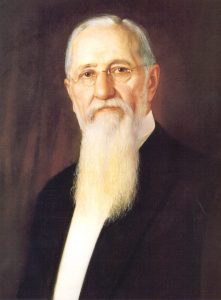
President Smith’s Attitude
The only reply President Joseph F. Smith made to these vicious and daily attacks, was to express himself as follows:
“I feel in my heart to forgive all men in the broad sense that God requires of me to forgive all men, and I desire to love my neighbor as myself; and to this extent I bear no malice towards any of the children of my Father. But there are enemies to the work of the Lord, as there were enemies of the Son of God. There are those who speak only evil of the Latter-day Saints. There are those—and they abound largely in our midst—who will shut their eyes to every virtue and to every good thing connected with this latter-day work, and will pour out floods of falsehood and misrepresentation against the people of God. I forgive them for this. I leave them in the hand of the just Judge.”11
The Case of John W. Taylor and M. F. Cowley
While the investigation at Washington was going on, Elders John W. Taylor and Matthias F. Cowley were requested by the senate committee as witnesses. President Smith was asked to locate them and have them go to Washington. In answer to his appeal they declined to go. It was discovered that they were out of harmony with the attitude of the Church regarding the manifesto of President Woodruff. They maintained that the manifesto applied to the United States only. However, the attitude of the Church was that it applied to the entire world.12
Official Statement of President Smith
This led to the discovery that some plural marriages had been entered into contrary to the announcement of President Woodruff, and also a statement made by President Lorenzo Snow. Therefore, President Smith, at the general conference, April 6, 1904, made the following official statement:
“Inasmuch as there are numerous reports in circulation that plural marriages have been entered into, contrary to the official declaration of President Woodruff of September 24, 1890, commonly called the manifesto, which was issued by President Woodruff, and adopted by the Church at its general conference, October 6, 1890, which forbade any marriage violative of the law of the land, I, Joseph F. Smith, President of the Church of Jesus Christ of Latter-day Saints, hereby affirm and declare that no such marriages have been solemnized with the sanction, consent, or knowledge of the Church of Jesus Christ of Latter-day Saints.
“And I hereby announce that all such marriages are prohibited, and if any officer or member of the Church shall assume to solemnize or enter into any such marriage, he will be deemed in transgression against the Church, and will be liable to be dealt with according to the rules and regulations thereof and excommunicated therefrom.
(Signed) “Joseph F. Smith.”
“President of The Church of Jesus Christ of Latter-day Saints.”
This statement, on motion of Francis M. Lyman, was presented to the conference and unanimously adopted. The agitation which followed led to the resignation, October 28, 1905, of Elders John W. Taylor and Matthias F. Cowley from the council of the apostles.13
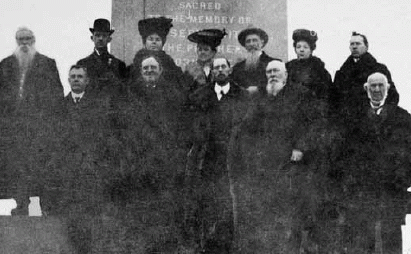
Dedication of the Joseph Smith Monument
Monday, December 18, 1905, President Joseph F. Smith and about twenty-five others, including a number of the general authorities of the Church, left Salt Lake City, for Sharon, Vermont, to dedicate a monument on the farm where Joseph Smith the Prophet was born. This beautiful monument, with a polished granite shaft thirty-eight and one-half feet high—one foot for every year of the Prophet’s life—had been erected under the direction of Elder Junius F. Wells. December 23, 1905, the one hundredth anniversary of the Prophet’s birth, it was dedicated and unveiled, President Smith offering the prayer. A short time before this event the Mack farm, on which the monument stands, had been purchased by the Church and a cottage built on the spot where the old home stood in which the Prophet was born. Subsequently the Church purchased the Smith farm and Sacred Grove, in Manchester township, New York.14
President Smith Visits Europe
In the summer of 1906, President Joseph F. Smith and Presiding Bishop Charles W. Nibley went to Europe and spent some time in each of the missions. This was the first time a President of the Church, while holding that office, had stood on Europe’s soil. It proved to be a great blessing to the Saints abroad and encouraged and built them up in the faith. An incident worthy of record which occurred on that trip was the remarkable healing of John Roothoff, a boy eleven years of age, residing in Rotterdam. The youth was blind, but learning that President Smith would be present he said to his mother: “If you will take me with you to meeting and he (President Smith) will look into my eyes, I believe they will be healed.” He was permitted to accompany his mother, and at the close of the services President Smith greeted each individual and shook hands with them. As the mother presented her son, President Smith raised the bandage on his eyes, and blessed him. When he returned home the boy said: “Mamma, my eyes are well, I can’t feel any more pain. I can see now, and far, too.”15
The Address to the World
At the general conference of the Church in April, 1907, which was held shortly after the settlement of the case against Senator Smoot, the First Presidency of the Church issued an “Address to the World” which was read to, and adopted by the conference. It set forth clearly the attitude of the Church respecting many matters which had been discussed during the hearing at Washington, and was also a reply to numerous magazine articles which appeared about that time written expressly for the injury of the Church.
It was stated in this address, in answer to the many false accusations, that the Church had respectfully submitted to the law enacted against plural marriage. “If it is urged that there have been instances of the violation of the anti-polygamy laws,” the document read, “the plain answer is that in every state and nation there are individuals who violate law in spite of all the vigilance that can be exercised; but it does not follow that the integrity of a community or a state is destroyed, because of such individual transgressions. All we ask is that the same common-sense judgment be exercised in relation to our community that is accorded to other communities.” It was also declared that the Church stood for the “absolute separation of Church and State; no domination of the State by the Church; no State interference with the functions of the Church, or with the free exercise of religion; the absolute freedom of the individual from the domination of ecclesiastical authority in political affairs; the equality of all churches before the law.
“The reaffirmation of this doctrine and policy, however, is predicated upon the express understanding that politics in the States where our people reside shall be conducted as in other parts of the Union; that there shall be no interference by the State with the Church, nor with the free exercise of religion. Should political parties make war upon the Church, or menace the civil, political, or religious rights of its members as such—against a policy of that kind, by any political party or set of men whatsoever, we assert the inherent right of self-preservation for the Church, and her right to call upon all her children, and upon all who love justice, and desire the perpetuation of religious liberty, to come to her aid, to stand with her until the danger shall have passed. And this openly, submitting the justice of our cause to the enlightened judgment of our fellow men, should such an issue unhappily arise. We desire to live in peace and confidence with our fellow citizens of all political parties and of all religions.”16
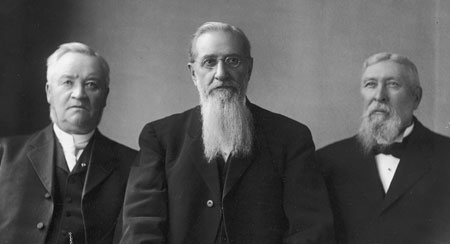
Changes in the Presidency
President John R. Winder, first counselor in the First Presidency, died Mar. 27, 1910. At the general conference in April following, Anthon H. Lund was advanced to the position of first counselor, and John Henry Smith was chosen as second counselor in the presidency. President John Henry Smith died October 13, 1911, and Elder Charles W. Penrose was chosen to succeed him, in the following December. The presiding patriarch, John Smith, died Nov. 6, 1911, and his grandson Hyrum G. Smith, was sustained in that calling at the general conference of the Church, April, 6, 1912.17
John Henry Smith
The Saints in Mexico
During the year 1912, on account of civil war in Mexico and the constant raid of banditti and guerrillas, the members of the Church residing in the Juarez Stake were robbed and persecuted and finally forced to seek refuge in the United States. With the hope that they would again return to their homes most of them located near the border, but as time passed and the condition did not improve, a large number moved away and located in other stakes, abandoning their property in Mexico. Some who remained near the border returned to their homes with the hope that they would be partially reimbursed for their losses.18
The World War
In the summer of 1914, Archduke Franz Ferdinand, heir to the throne of Austria-Hungary, was murdered by a Serbian student. This event caused strained relations to exist be tween Austria and Serbia. Austria backed by Germany, was not willing to accept the conciliatory note of the smaller country, which did everything possible to avoid a rupture, and declared war July 28, 1914. The action was followed by a declaration of war by Germany against Russia on a pretext, August 1. Germany also made an attack on France, attempting to go through Belgium, against the wishes of that kingdom, to expedite their advancement. The invasion of Belgium brought Great Britainin into the conflict, and eventually most of the countries of the earth were drawn into the war. Due to Germany’s ruthless submarine campaign on the high seas, the United States was forced to declare war against that power, April 6, 1917. Those nations which were not actually aligned with one or the other hostile force, were caused to suffer great privation and hardship. The great conflict continued until November 11, 1918, when an armistice was declared, which later resulted in a treaty of peace, Germany and her Allies, Austria-Hungary and Turkey, being required to pay enormous war indemnity. Millions of lives were sacrificed and billions in property destroyed during the four years of actual conflict, and at the close the nations found themselves on the verge of bankruptcy.
During the first year (1917) the United States was in the war, 3,854 members of the Church were in the army; 616 in the navy; 196 in the marines and over 800 in other branches of the service, including the Red Cross and medical corps. By the early part of January, 1919, there were 14,975 members of the Church in the service. Between six and seven hundred lost their lives during the period of the war.19
The Fulfilment of Prophecy
The world war was a further fulfilment of the prophecy on war, given to Joseph Smith, Christmas day, 1832, wherein the revelation states that “the days will come that war will be poured out upon all nations.” This revelation on war was partly fulfilled during the rebellion of the Southern States, which was the beginning of the end, according to the revelation. There are yet other things pertaining to war and the vexation of the nations, spoken of in that prophecy, which are to be fulfilled.20
A Period of Prosperity
The administration of President Joseph F. Smith was noted chiefly for the prosperity and advancement of the Church during the seventeen years of his presidency. The work spread abroad in the earth as well as in the stakes of Zion. Meeting houses and tabernacles, with all the modern conveniences, were erected in many stakes and wards. Even in the mission fields commodious headquarters and churches were purchased or built in various places. The Dr. Groves Latter-day Saints Hospital, one of the best in the country, was erected. Two large and important structures, the Bishop’s Building and the Church Office Building, were built for the purpose of taking care of the various offices and departments of Church work. The Church school system was advanced and enlarged, and the very best facilities were obtained for the education of the youth of Zion. Two temples, one at Cardston, Canada, and one at Laie, Hawaii, were under course of erection, and the work for the salvation of the dead received an impetus which filled the present temples to overflowing. The Church was placed in a position to command the respect of all honest men. Prejudice was overcome, and the great men of our nation commenced to look upon the Latter-day Saints with more kindly feelings.21
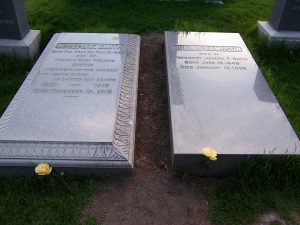
The Passing of President Smith
In the spring of 1918, President Smith commenced to fail in health, and during the late summer and fall he attended to most of his business matters in his own room spending very little time at the office. He would generally take a short automobile ride in the afternoon, from which he received great benefit. During the October conference (1918) he was improved and presided at all the sessions. His opening address was heard in all parts of the tabernacle, but was not delivered with his usual physical vigor. After the conference he was again confined to his room the greater part of his time. October 3, 1918, the day before the conference convened, he received a remarkable manifestation in which much additional light was revealed regarding the salvation of the dead and the visit of the Savior to the world of spirits after his crucifixion. He made reference, indirectly, to this vision in his remarks at the conference, but it was not published until December, having first been submitted, October 31, to the counselors in the presidency and the apostles and patriarch and unanimously accepted by them.
Sunday, November 17, 1918, President Smith was taken with an attack of pleurisy which continued to grow in intensity, finally developing into pleuro-pneumonia, and he passed away, Tuesday morning, November 19. No public funeral could be held as the city was under quarantine because an epidemic of influenza was over all the land. Thousands of people lined the streets as the cortege passed and services in the cold open air were held at the grave, where brief remarks were made by President Heber J. Grant and Bishop Charles W. Nibley. President Anthon H. Lund had charge of the services and President Charles W. Penrose dedicated the grave.[ref[Ibid. pg.517-518[/note]
Heber J. Grant, Conference Report, June 1919, p.11 At Home, November 20, 1918.
To the family of President Joseph F. Smith.
My dearly beloved friends: Language fails me to express to you my love for your dear departed father and husband. In dear Aunt Eliza R Snow’s words I can truthfully say, “He was beloved, beloved by all.”
Heber J. Grant, Conference Report, June 1919, p.11
For thirty-six years I have labored under his Presidency, while he was counselor to or the President of the Church. During all this time no man could possibly have inspired one over whom he presided with more love or confidence for him than President Smith did me. I have said many times that no man who ever lived, with whom I have been associated, had been beloved by me as much as your dear departed husband and father.
Heber J. Grant, Conference Report, June 1919, p.11
I could not and did not in my heart bring myself to feel that he was going to leave us until the afternoon of the 18th, when I called and David said he wanted to see me. The President took my hand and pressed it with a power and strength that was far from what one could expect from a dying man, and he blessed me with power and the Spirit of the living God, and there was love in his eyes and a strong pressure of his hand, and with nearly every word he spoke his pressure of my hand thrilled my being, and tears of gratitude to God and love for His mouthpiece upon the earth filled my heart. His blessing was all that I could ask or expect had he been my own dear father.
Heber J. Grant, Conference Report, June 1919, p.11
Sister Bowman entered and kissed and wept over her father, and I walked into the little front office and wept, feeling that the last words I would ever hear from his beloved lips had been spoken when he said to me, “The Lord bless you, my boy, the Lord bless you, you have a great responsibility. Always remember this is the Lord’s work and not man’s. The Lord is greater than any man. He knows whom He wants to lead His Church and never makes any mistakes. The Lord bless you.”
- Essentials in Church History. Joseph Fielding Smith, pg. 507
- Ibid. pg.508
- Ibid. pg.508
- Ibid. pg.508-509
- Ibid. pg.509-510
- Ibid. pg.510
- Ibid. pg.510
- Ibid. pg.510-511
- Ibid. pg.511
- Ibid. pg.511-512
- Ibid. pg.512
- Ibid. pg.512
- Ibid. pg.512-13
- Ibid. pg.513
- Ibid. pg.513-514
- Ibid. pg.514-515
- Ibid. pg.515
- Ibid. pg.515
- Ibid. pg.516-517
- Ibid. pg.517
- Ibid. pg.517


